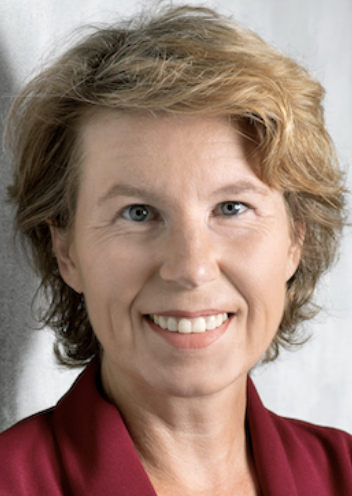On this date in 1976, Sabine Hossenfelder — theoretical physicist, author and science communicator — was born in Frankfurt am Main, Germany. “I’ve grown up an atheist, I was never baptized,” she later wrote. “I didn’t know much of God until I went to school and had to attend religion class, against my mother’s will.” (medium.com, “The Rising Star of Science,” Dec. 23, 2014)
She earned a B.S. and an M.S. in mathematics from Johann Wolfgang Goethe-Universität in Frankfurt, where she was awarded a doctorate in theoretical physics in 2003. She subsequently worked as a research fellow at the University of Arizona-Tucson, University of California-Santa Barbara and at the Perimeter Institute in Waterloo, Ontario.
Hossenfelder joined the Nordita Institute for Theoretical Physics in Stockholm in 2009 as an assistant professor and was employed by the Frankfurt Institute for Advanced Studies between 2015-22. As of this writing in 2023, she is associated with the Munich Center for Mathematical Philosophy in Germany: “I am working on physics beyond the standard model, phenomenological quantum gravity, and modifications of [Einstein’s theory of] general relativity,” she wrote on her website.
She and Stefan Scherer, also a Ph.D. physicist, married in 2006 and have twin daughters, Lara and Gloria, born in December 2010.
Her free weekly newsletter includes noteworthy items from the past week centered around topics covered on her YouTube channel “Science Without the Gobbledygook.” It has almost 750,000 subscribers. She has blogged regularly since 2006, currently at Backreaction.
Hossenfelder says science is more than a profession. “It’s a way to make sense of the world. It’s a way to find unity with nature. Most scientists are atheists, not so much because belief and superstition have no place in science, but because, as [Pierre-Simon] Laplace put it so aptly, God is a useless hypothesis. Why spend the Sunday in church when you can spend it in the lab?” (medium.com, Ibid.)
In “Existential Physics: A Scientist’s Guide to Life’s Biggest Questions” (2022), she posited that science and religion have the same roots. “They tackle many identical questions: Where did we come from? How did we get here? How much do we know? … Physics has come the closest to answering these questions.” (Hippocampus Magazine, Sept. 7, 2022) Library Journal called it an excellent book on physics for general readers.
Her first book, “Lost in Math: How Beauty Leads Physics Astray” (2018), was written in English and translated into German, French, Spanish, Polish, Japanese, Romanian, Korean, Chinese, Hungarian and Italian. She contributes to the Forbes column Starts with a Bang edited by astrophysicist Ethan Siegel (formerly hosted by medium.com), Quanta Magazine, New Scientist, Scientific American, Nautilus Quarterly and numerous others.
“Science tells you that praying doesn’t cure cancer, that there is no immortal soul that lives when your body rots away. Science tells you there is nobody to watch over you, and that there are no rights and wrongs other than the ones that we create. Scientists deliver the truth and then leave you alone to deal with it,” wrote Hossenfelder on the need to make science more accessible to the general public. (medium.com, Ibid.) “If you are struggling to make sense of life, you don’t go and talk to a professor of neurology. If you’re suffering from unrequited love, you don’t look for advice in a journal of evolutionary psychology. If you’re having a phase of bad luck, you don’t seek solace by attending a lecture on statistics. Science isn’t helpful for most people because they don’t know what science has to give. And nobody is there to tell them.”
PHOTO CREDIT: Warner Kissel


